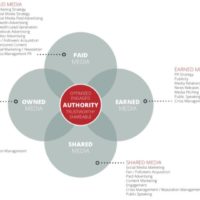
Written by Nikki Richard – Creator of nikkirichard.com and Marketing Consultant
One of the biggest challenges for new businesses, particularly startups and small businesses, is demand generation.
WHAT IS DEMAND GENERATION?
Simply put, demand generation is a holistic approach to marketing and sales cohesion.
The purpose of demand generation is to build up awareness, interest, and excitement around your business’s products and services throughout all areas of your marketing and sales processes (aka, the whole funnel!) Over time, this will only strengthen prospect relationships and enhance lead quality.
The problem is that many businesses don’t take this holistic approach, and instead emphasize a single component of demand generation – such as lead generation. When you’re too focused on the quantity of leads over the quality of leads, that’s when you start hitting bumps in the road . . .
According to a recent article in the Harvard Business Review, an estimated 70% of the content generated by Marketing is never used by Sales and a similar percentage of the leads generated disappear into a “sales lead black hole.” Why? Perhaps it’s not aligned with your target audience at any specific stage of the funnel, and therefore sales has no need for it.
Last time I checked, sales and marketing were supposed to be working towards the same goal. So, how can sales and marketing teams work together and become BFFs?
1. COMMUNICATE
Start by defining a “qualified” lead. For example, if marketing is wasting the sales team’s time with too many poorly-qualified leads (or not enough leads), ensuring marketing understands what makes a sales qualified lead sets things in the right direction. A detailed outline, or written definition of each type of lead shared can remedy the problem.
2. STREAMLINE THE PROCESS
Having broken or flawed processes between sales and marketing will only hurt your business. Identify any discrepancies within the sales funnel. You can only resolve them if you know what they are.
Next, stress the importance of thinking as sales-minded marketers and marketing-minded salespeople. When both parties work with the other in mind, you’ll find that the hand-off from marketing to sales is less painful!
”Companies with dynamic, adaptable sales and marketing processes report an average 10% more of their salespeople meet their quotas compared to other companies.” – CSO Insights
3. METRICS MATTER
Working towards the same metrics is key. Unfortunately, organizations let sales and marketing act as two separate entities. Let metrics be your friend. Having a list of metrics that matter can help both departments have a happy and healthy relationship.
4. COLLABORATE ON CONTENT CREATION
Building awareness takes a continued effort and involves multiple facets of marketing, including content creation. As content continues to evolve, it’s important that sales and marketing work together to understand their target audience and find new ways of keeping content interesting.
Marketing can help shape content that is relevant and engaging to the target audience, while sales can develop more personal messaging that is customized to the individual prospective customer.
“That likely explains why the average viewing time for content is 2 minutes and 27 seconds.” – Harvard Business Review
Sales and marketing functions within a business are both equally important, and when they are in sync and working like a well-oiled machine — well . . . that’s when the magic happens.




